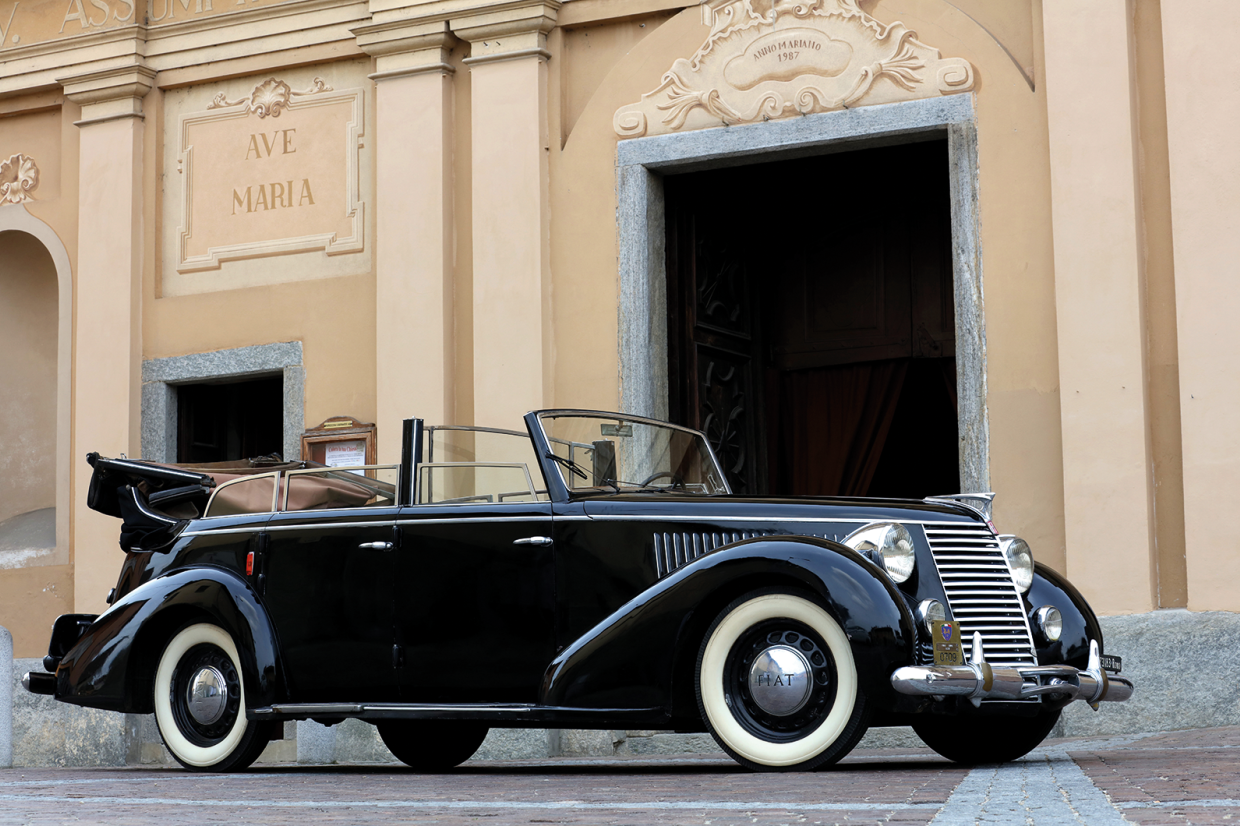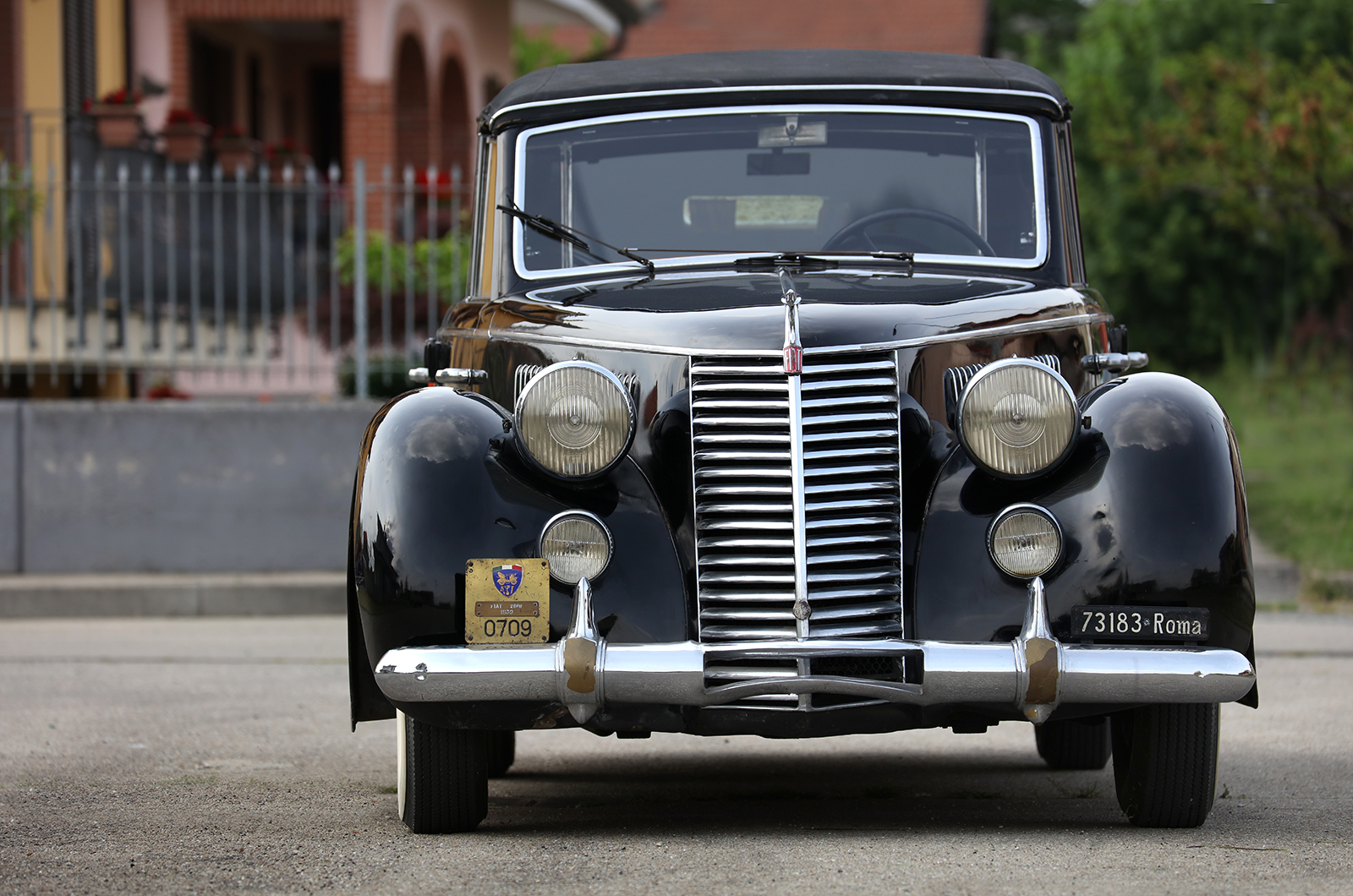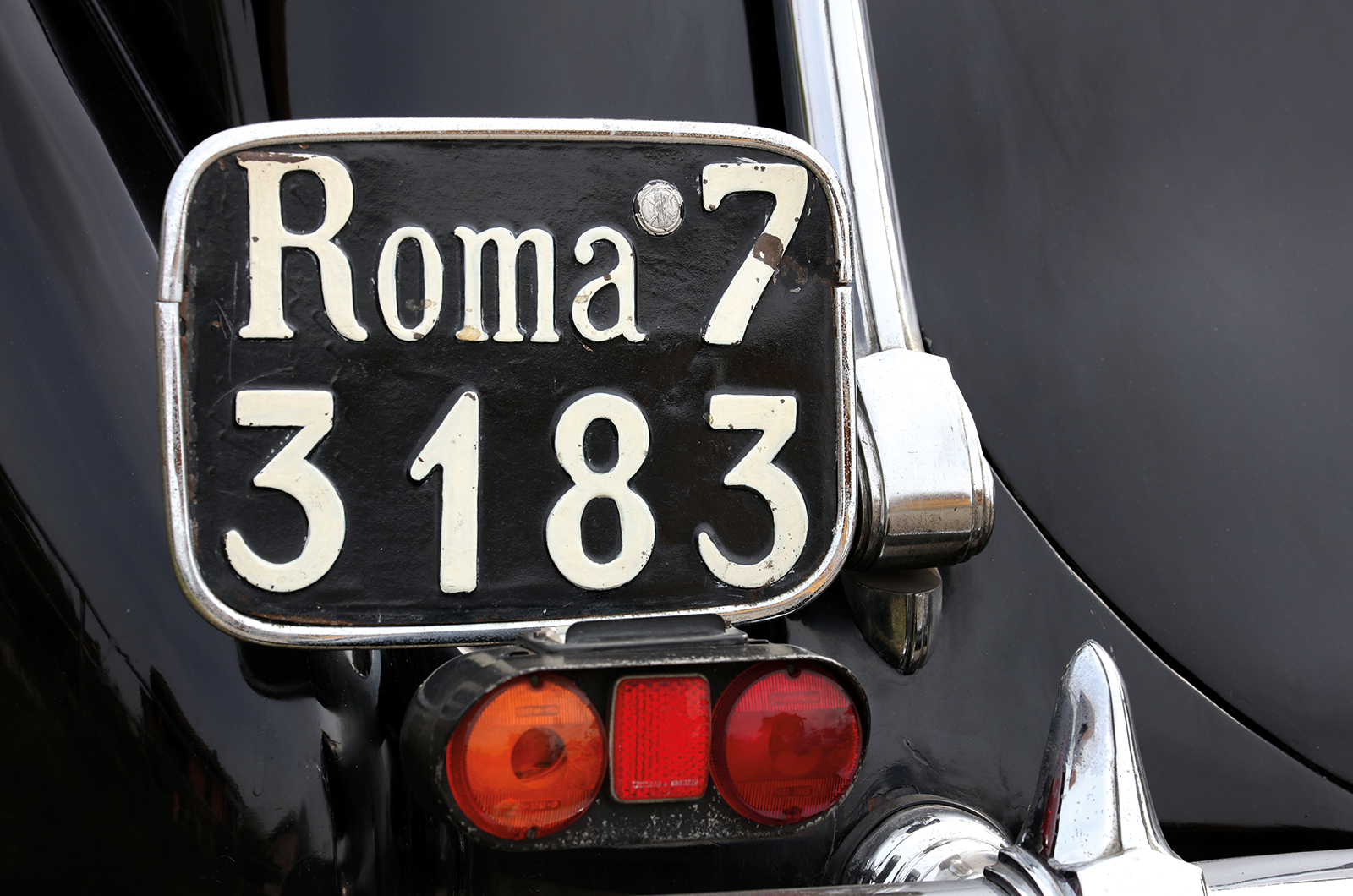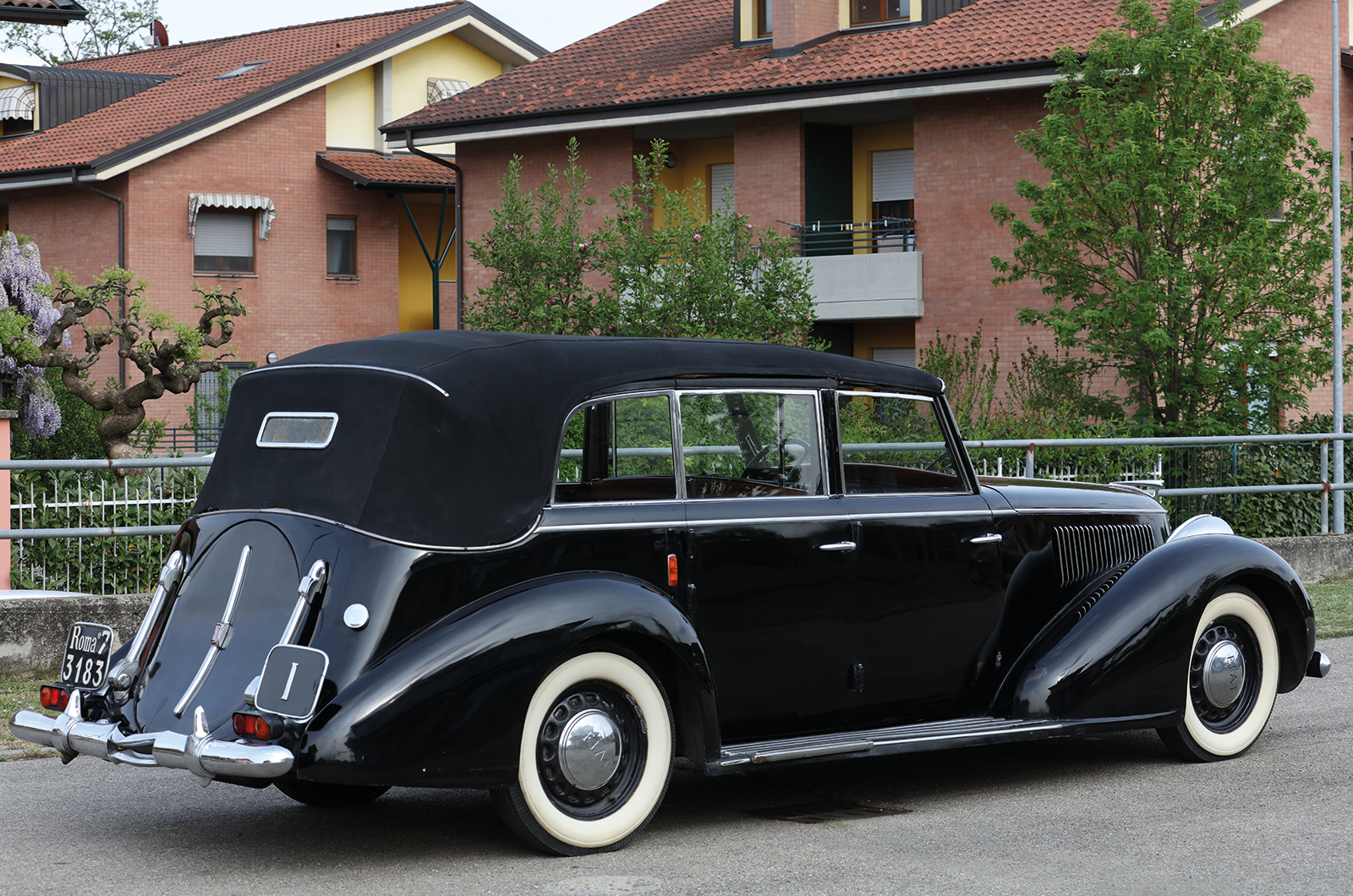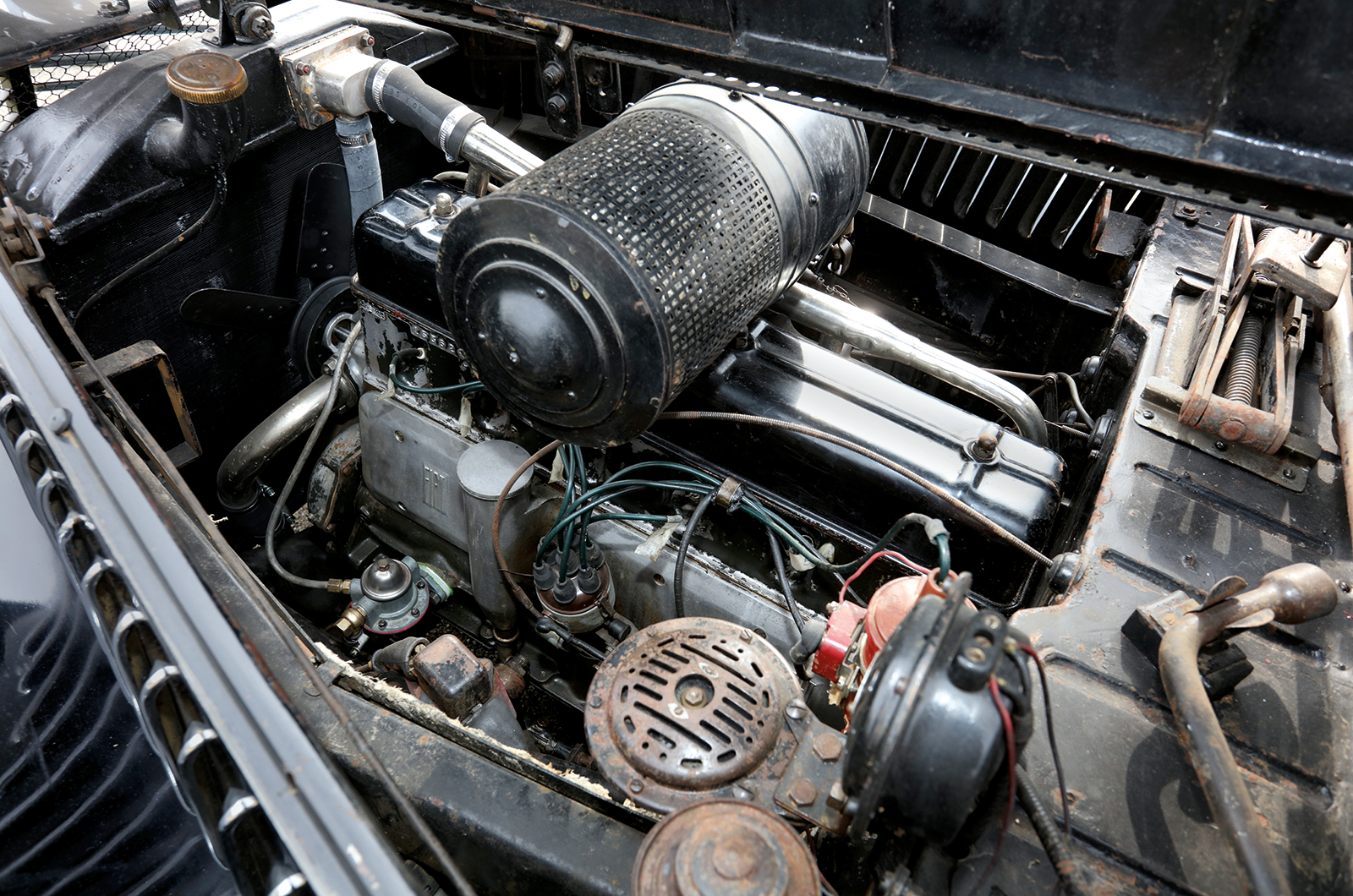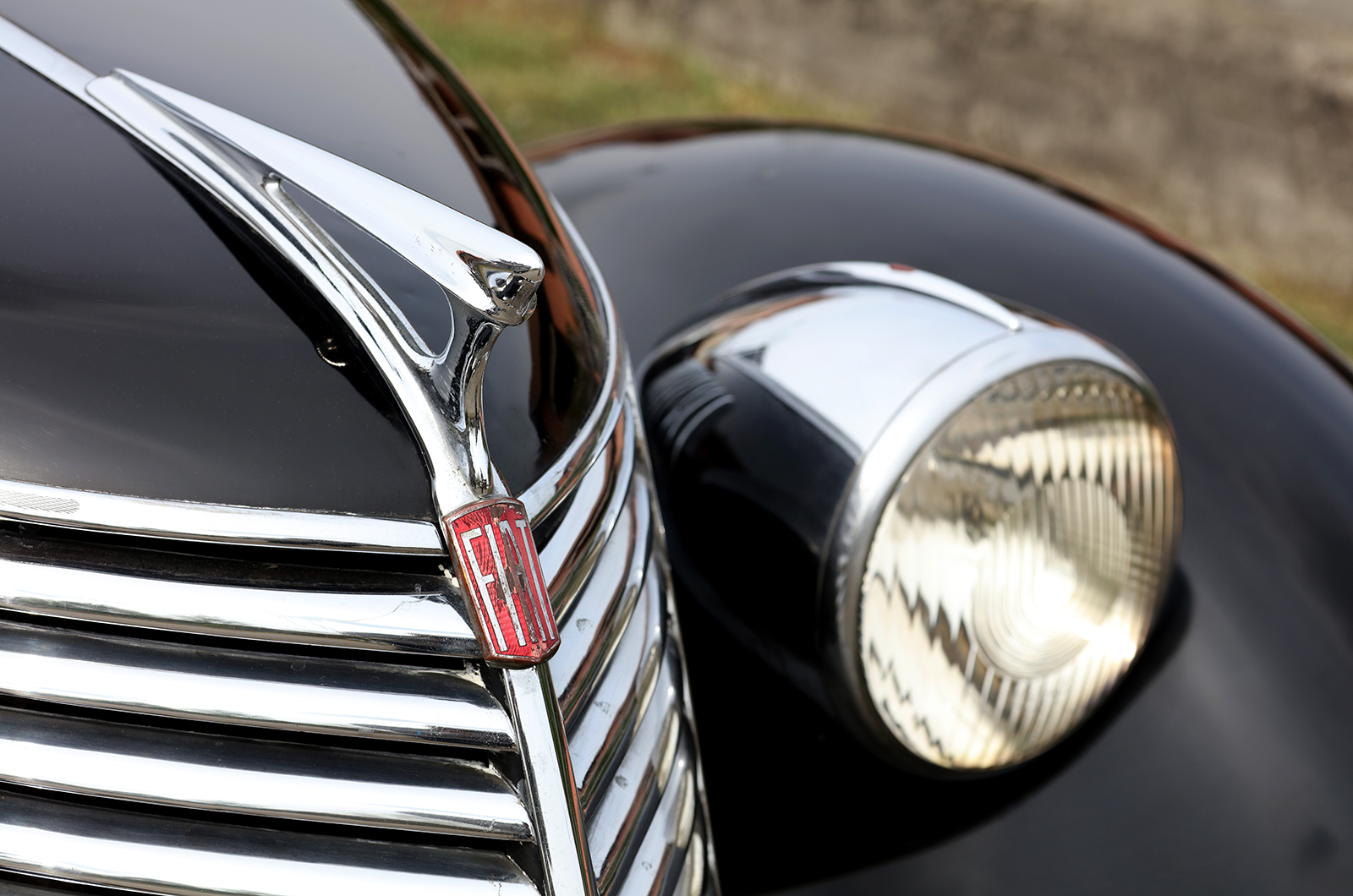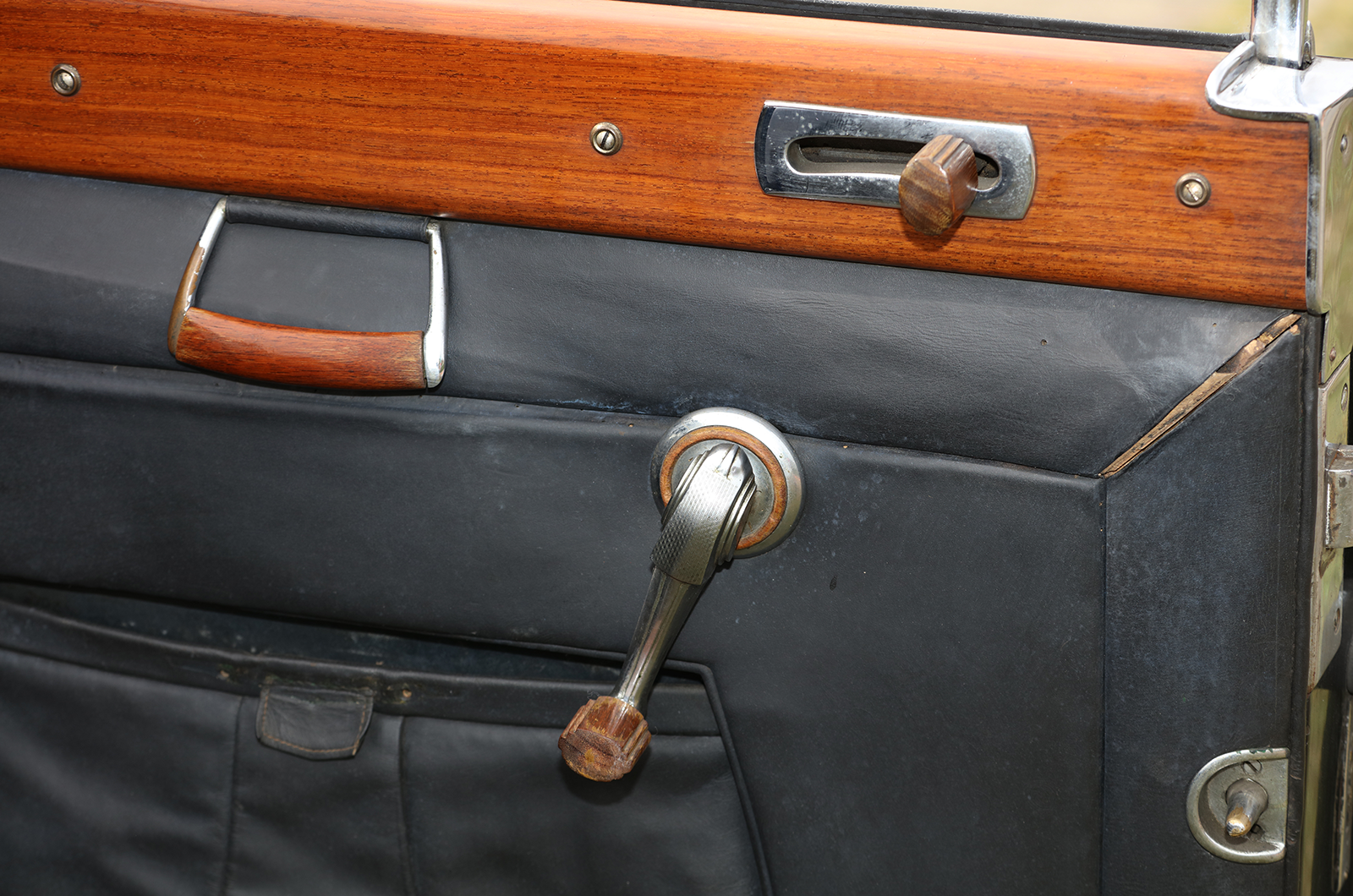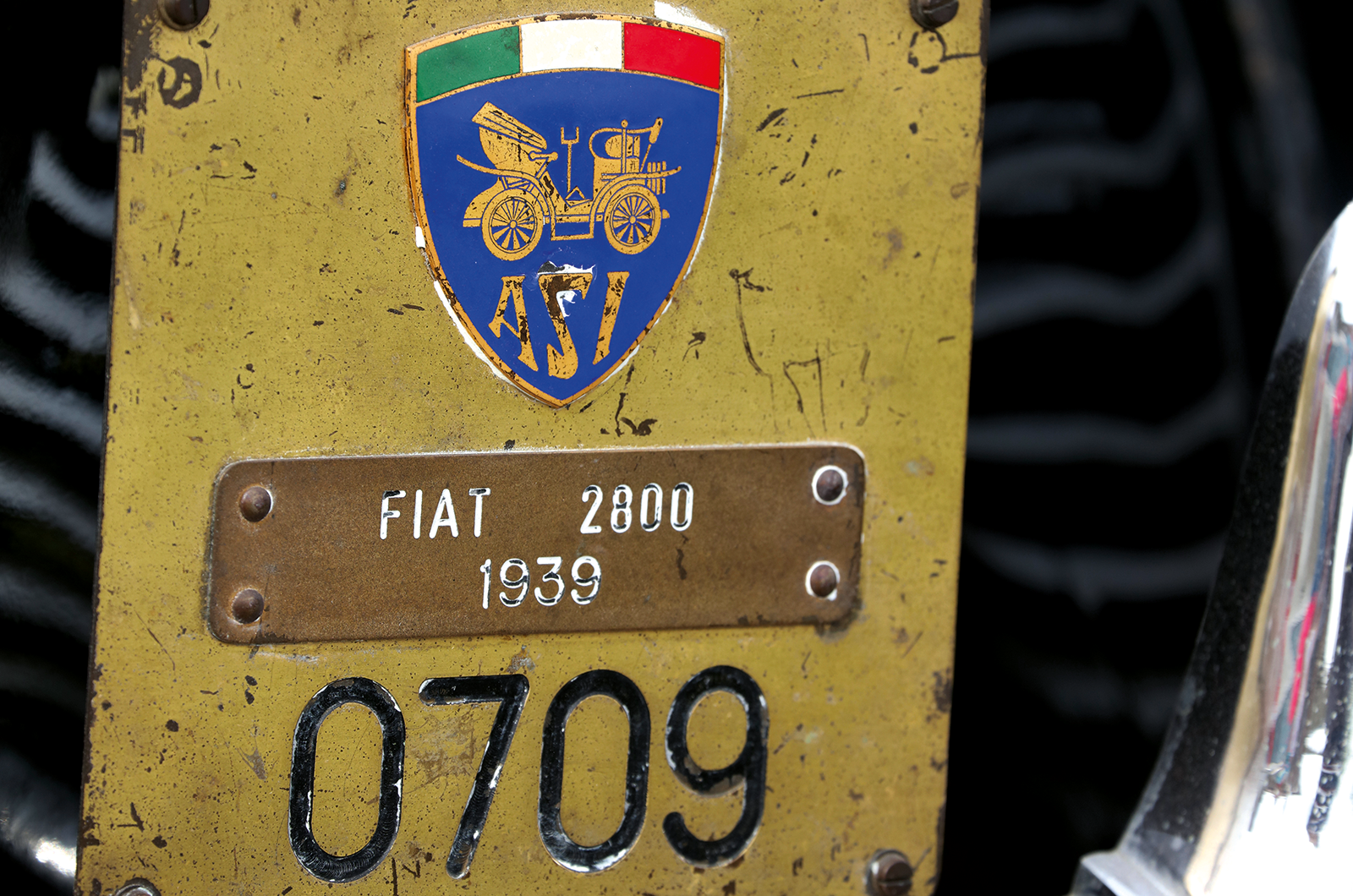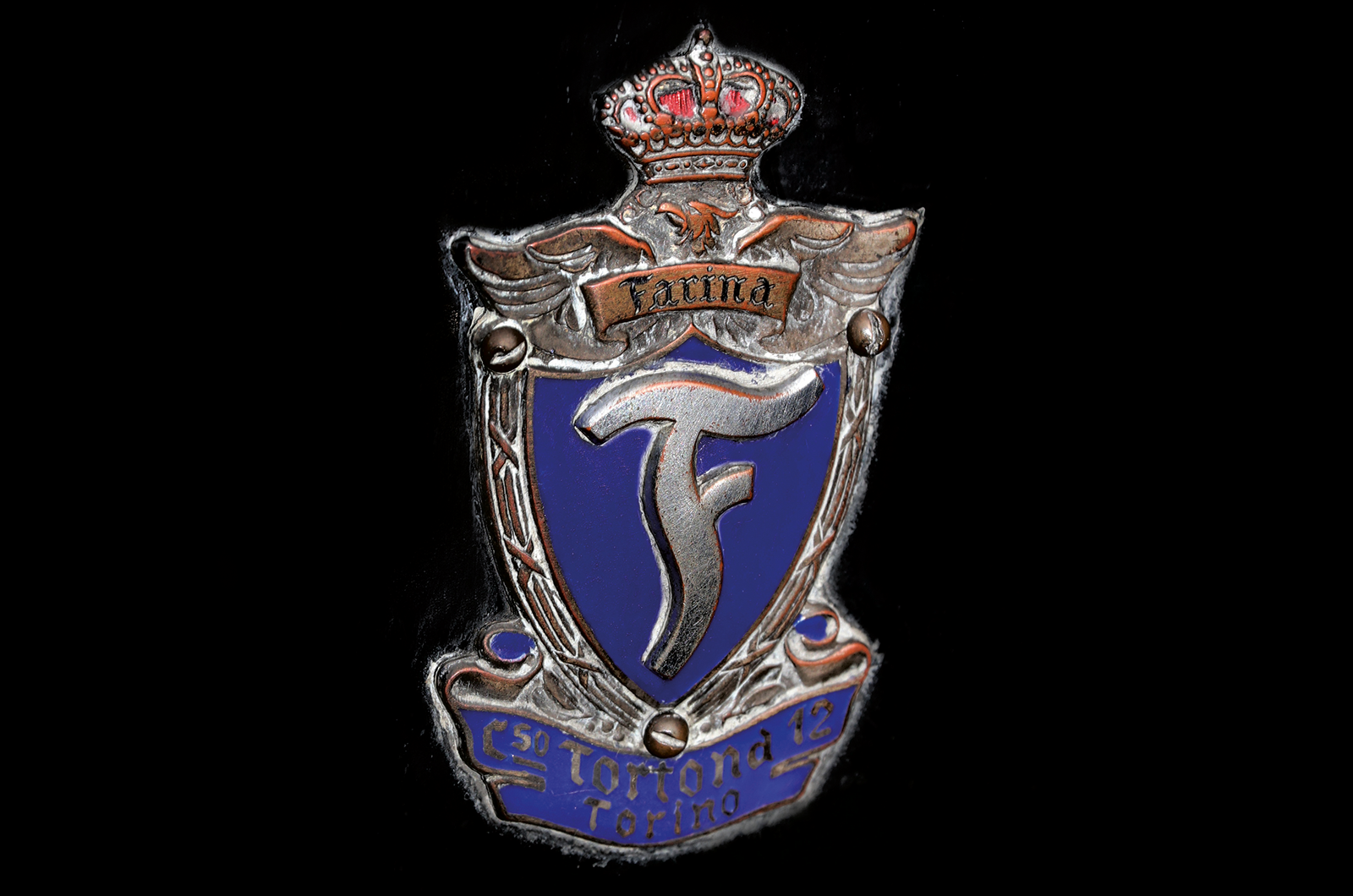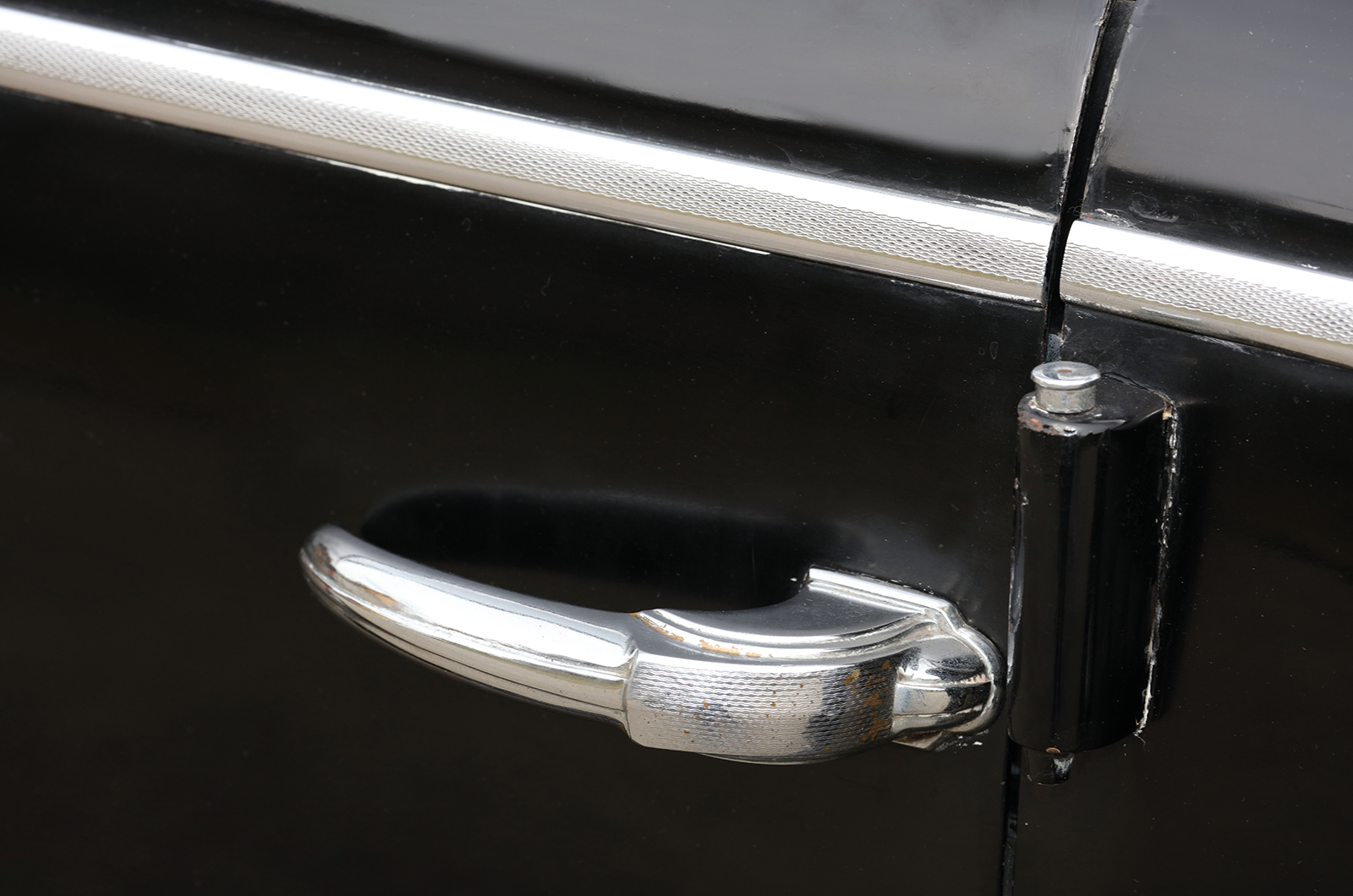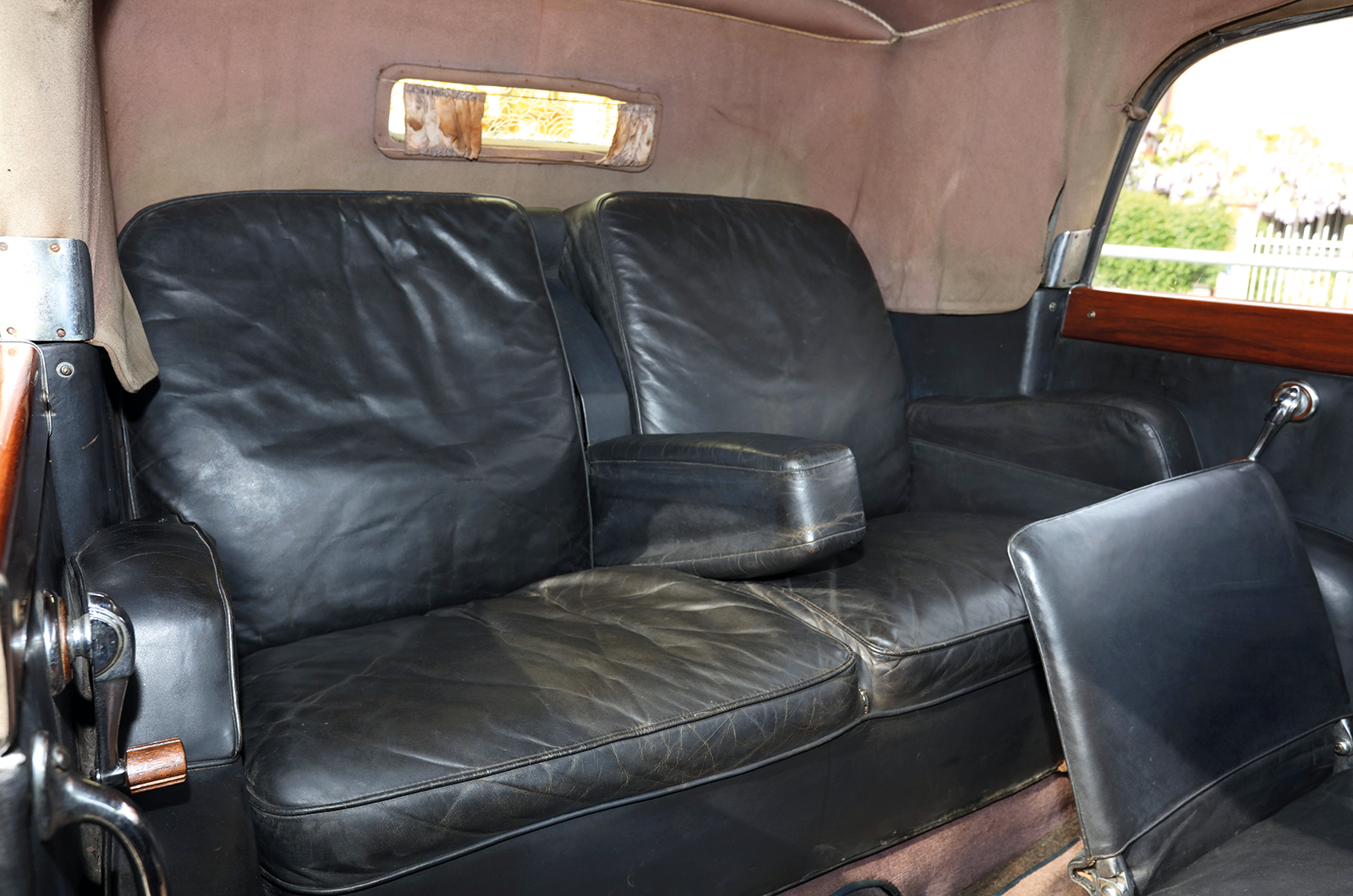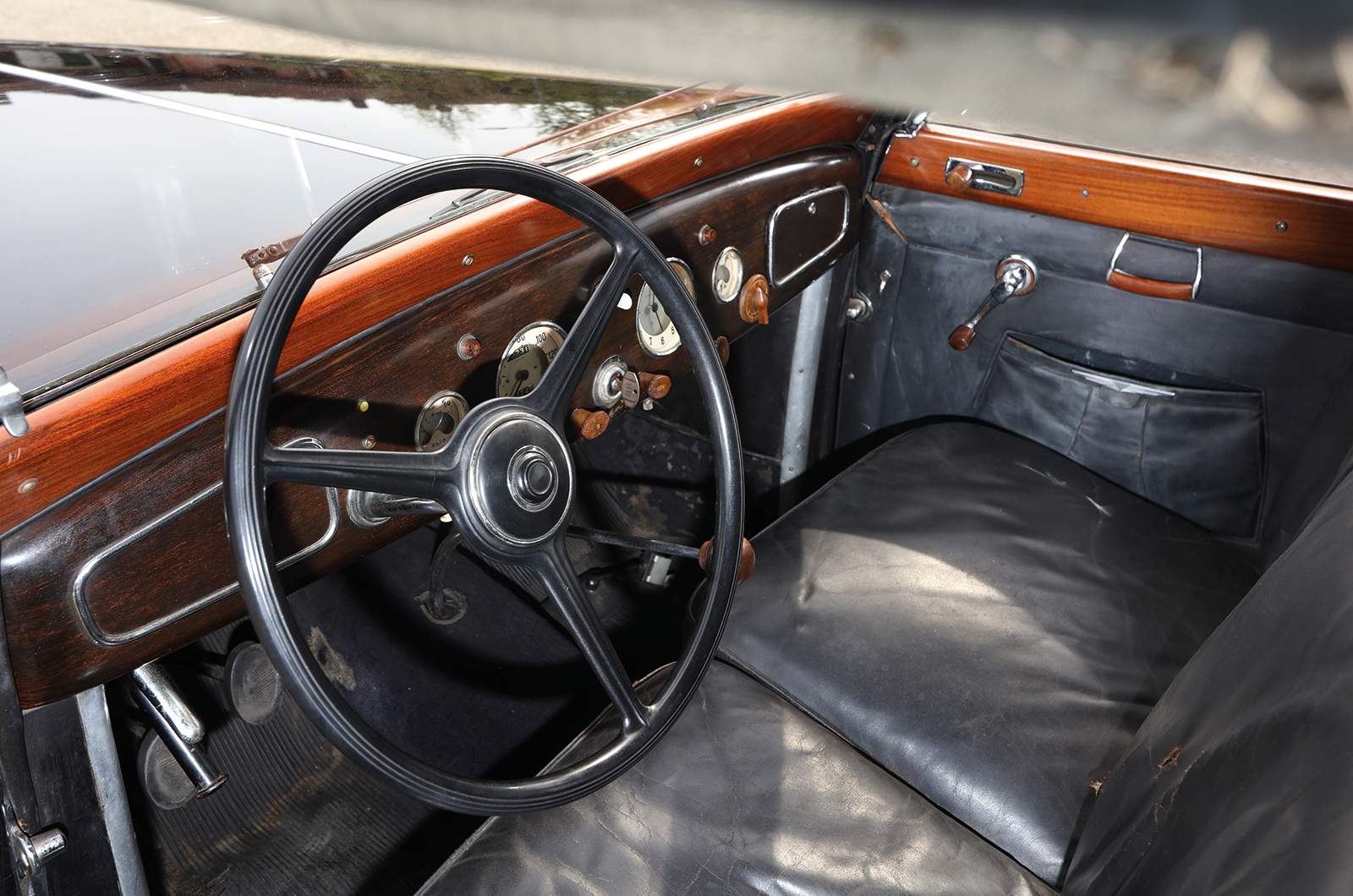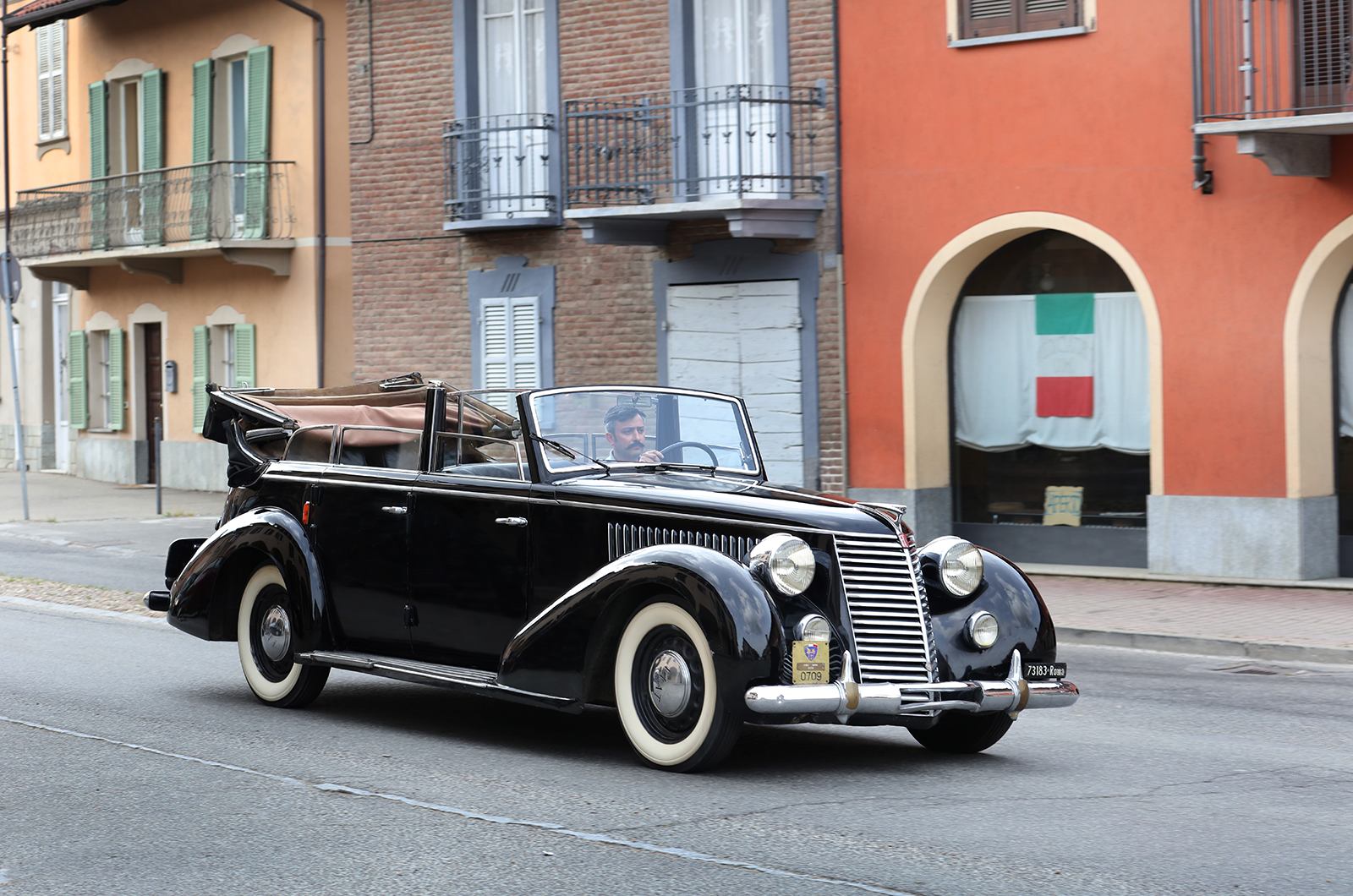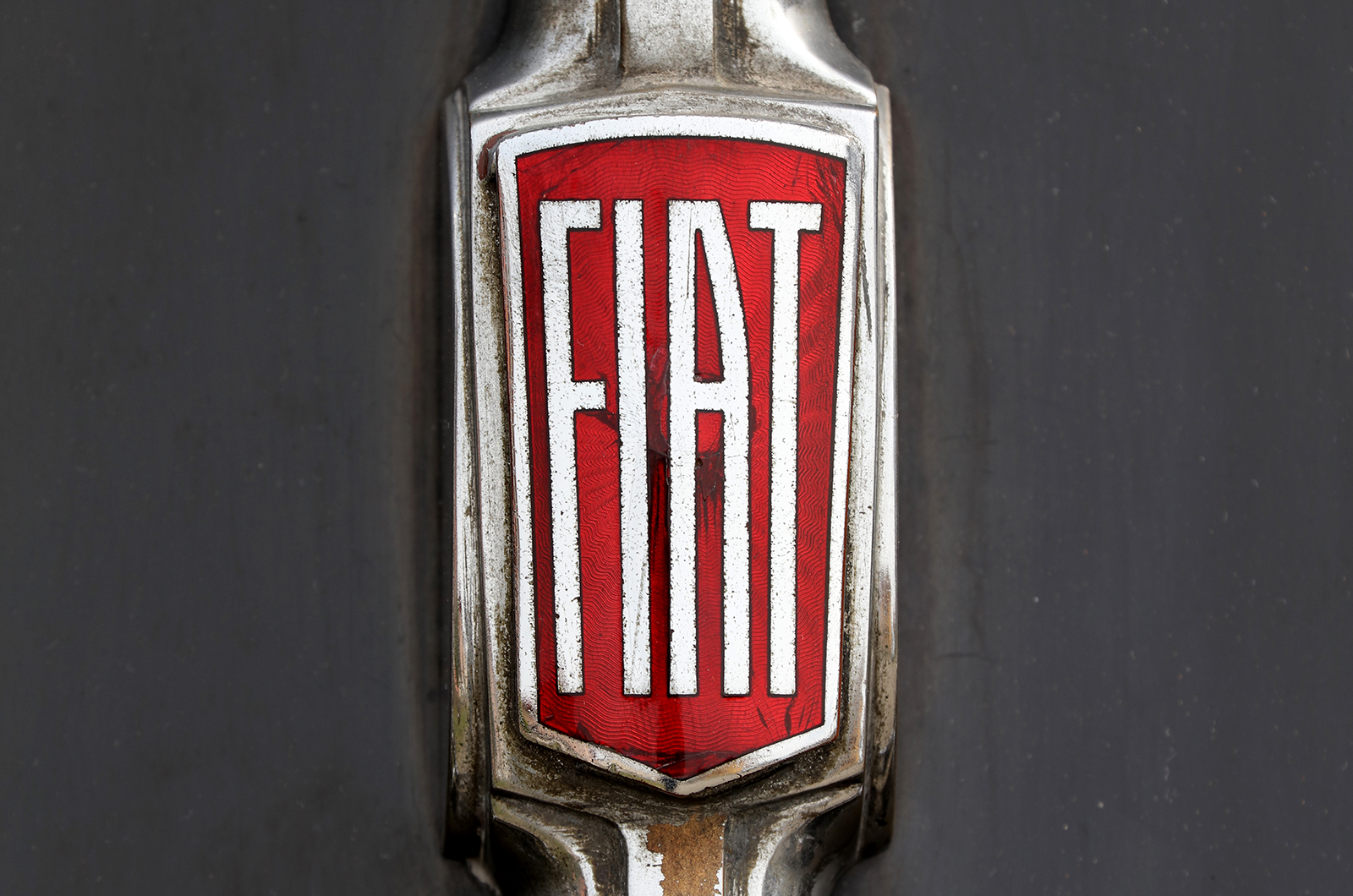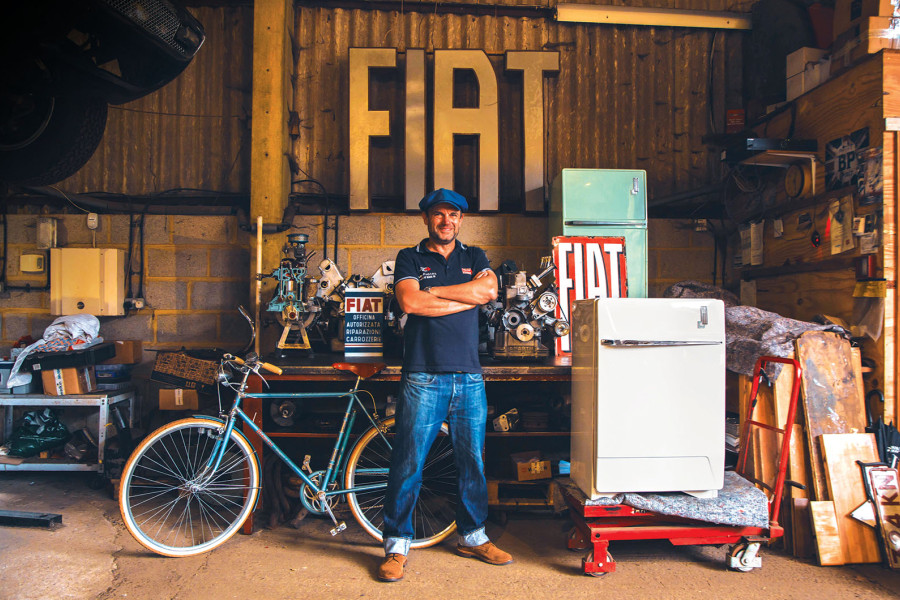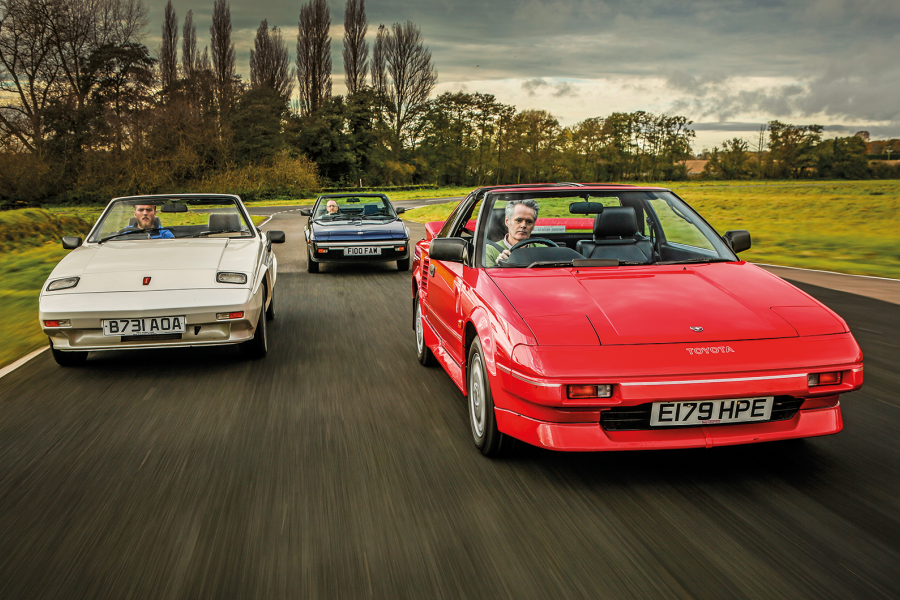The rather clumsy outside door hinges, on the other hand, look slightly out of place on such a finely crafted example of the Italian coachbuilder’s art.
Inside, there is something creepy about the faded staining on the crumpled tatters of the rear window sunblind, but you cannot deny the simple elegance of the veneers or marvel at the way the faux B-posts fold themselves away when you roll down the centre windows.
The windscreen hinges out at the top, helping the driver to keep cool on a hot day.
There are occasional folding seats in the back and slightly dry dark-blue leather throughout. From the high-set rear throne, you can look through the glass division into the chauffeur’s compartment at the dashboard and beyond.
The driver, ideally quite a short individual, surveys a modest selection of cream-faced instruments and a smattering of Bakelite switchgear; 80-plus years have almost worn away any clues as to their individual functions.
Turn the big wind-up-toy ignition key, press the starter button and the straight-six rumbles into life beneath the centre-hinged bonnet.
There is not much to see there, just a single Zenith carburettor above a cast-iron manifold, an ugly air-cleaner canister and a chromed external coolant pipe running alongside the big, black rocker cover.
Neither is there much to report from the driver’s seat of this two-ton, 85bhp, 81-year-old behemoth.
I can only confirm that it does indeed stop, and go around corners, after a fashion. The idea here, as the chauffeur pumped the floor-hinged pedals, shuffled the big, truck-like steering wheel and manoeuvred the 2ft-long bent wand of a gearlever, would simply have been to make sure their passengers’ progress was as seamless as possible, and try to make it all look easy.
ROMA 7 3183 is almost entirely original, other than perhaps its whitewall tyres, a long-forgotten repaint and the coveted ASI brass plate that certifies its historical significance in Italy.
Who knows which of the usual suspects from those times have sat in the sumptuous rear seats with their gigantic triple armrests, or glanced through the slot-like rear window in the huge, fully lined hood.
Unfortunately, when lowered this colossal roof makes the Fiat look like a giant Silver Cross pram.
It is a much happier-looking thing with the soft-top erected, with a massive dignity that successfully eclipses the taint of the various unsavoury characters who may, or may not, have ridden in the back.
Images: James Mann
Factfile
Fiat 2800 Torpedo Reale
- Sold/number built 1938-’44/624 (all types)
- Construction steel body, steel chassis
- Engine iron-block, alloy-head, ohv 2852cc straight-six, single Zenith carburettor
- Max power 85bhp @ 4000rpm
- Max torque n/a
- Transmission four-speed manual, RWD
- Suspension: front independent, by trailing arms rear live axle, semi-elliptic leaf springs
- Steering worm and sector
- Brakes hydraulic drums
- Length 17ft 4¾in (5301mm)
- Width 6ft 8in (1801mm)
- Height 5ft 7in (1699mm)
- Wheelbase 10ft 6in (3200mm)
- Weight 4090Ib (1855kg)
- 0-60mph n/a
- Top speed 81mph
- Mpg n/a
- Price new n/a
- Price now £250,000*
*Prices correct at date of original publication
READ MORE
Keeping the faith: restoring a Duesenberg Model SJ
Why the Volkswagen Kübelwagen deserves its classic status
The unique Ford Capri that’s also a work of art
Martin Buckley
Senior Contributor, Classic & Sports Car
